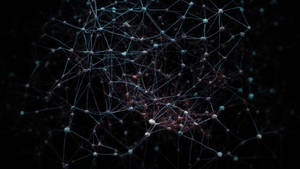Clustering: Gaussian Mixture Models

Clustering is a fundamental unsupervised learning technique used to identify inherent structures in data by grouping similar data points together. One popular method for clustering is the Gaussian Mixture Model (GMM), which assumes that the data comprises multiple Gaussian distributions, each representing a different cluster within the dataset.
How GMM Works:
Initialization:
- Begin by randomly initializing parameters such as means, covariances, and mixing coefficients for each of the Gaussian components.
Expectation-Maximization (EM) Algorithm:
- E-Step: Calculate the probability that each data point belongs to each of the clusters using the current parameters.
- M-Step: Update the parameters (mean, covariance, mixing coefficient) based on these probabilities to maximize the likelihood of observing the data under this model.
Convergence:
- Iterate between E-step and M-step until convergence criteria are met, such as small changes in log-likelihood or parameter values.
Key Concepts:
Cluster Assignment:
- At any given point during training, GMM provides probabilities of each data point belonging to different clusters instead of hard assignments.
Parameter Uncertainty:
- GMM also provides uncertainty estimates for model parameters such as mean and covariance matrices due to its probabilistic nature.
Advantages of GMM:
Flexibility: GMM can capture complex cluster shapes due to its ability to model covariance between features in addition to capturing multi-modal distributions.
Soft Assignments: Soft clustering allows for more nuanced interpretations compared to hard clustering algorithms like K-means.
Applications of GMM:
- Image segmentation
- Anomaly detection
- Recommender systems
In conclusion, clustering using Gaussian Mixture Models offers a powerful approach for identifying hidden patterns within datasets that may not be linearly separable or have well-defined boundaries. Its probabilistic nature and flexibility make it a valuable tool in various machine learning applications.
Sponsored
Sponsored
Sponsored
Explore More:

Model Evaluation and Selection
Topic model evaluation and selection are crucial steps in the process of building...

Feature Engineering
Feature engineering is the process of selecting, creating, and transforming features (inputs) in...

Natural Language Processing (NLP)
Natural Language Processing (NLP) is a subfield of artificial intelligence that focuses on...

Neural Networks and Deep Learning
Neural networks are a class of algorithms modeled after the human brain's neural...

Reinforcement Learning
Reinforcement learning is a branch of machine learning concerned with how intelligent agents...

Dimensionality Reduction: Autoencoders
Autoencoders are a type of artificial neural network used for learning efficient representations...

Dimensionality Reduction: Factor Analysis
Factor analysis is a powerful technique used in the field of machine learning...

Dimensionality Reduction: Independent Component Analysis (ICA)
Independent Component Analysis (ICA) is a dimensionality reduction technique commonly used in machine...

Dimensionality Reduction: t-Distributed Stochastic Neighbor Embedding (t-SNE)
Dimensionality reduction is a fundamental technique in machine learning and data visualization that...

Dimensionality Reduction: Principal Component Analysis (PCA)
Principal Component Analysis (PCA) is a popular dimensionality reduction technique used in machine...

Unsupervised Learning: Dimensionality Reduction
Unsupervised learning dimensionality reduction is a crucial concept in machine learning that deals...

Clustering: DBSCAN
DBSCAN (Density-Based Spatial Clustering of Applications with Noise) is a popular clustering algorithm...

Clustering: Hierarchical Clustering
Hierarchical clustering is a popular unsupervised machine learning technique used to group similar...

Clustering: K-Means
Clustering is an unsupervised machine learning technique that aims to partition a set...

Unsupervised Learning: Clustering
Unsupervised learning clustering is a fundamental concept in machine learning that involves identifying...

Unsupervised Learning
Unsupervised learning is a type of machine learning where the model is trained...